A lone male dancer stands on a bare stage, surrounded by darkness. A woman appears in a loose, simple shift dress, her arms bare. Their encounter is intimate, sensual, ancient, bathed in warm light, a dance under the primordial sun.
Shapes appear as the darkness lifts, young women and men come out to join the ritual. There is a sense of community and continuity in their coming together, with ominous overtones: the cycle of life is the cycle of death, and the shape of together implies the possibility of alone.
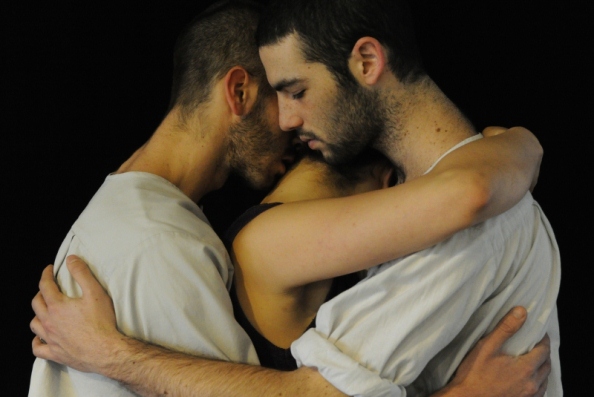
Ohad Naharin’s Tabula Rasa is a work of poignant beauty and burgeoning sensuality, set to music by Estonian composer Arvo Pärt. Originally created for the Pittsburg Ballet, where it premiered in 1986, the piece was presented in Israel in 1987, and has not been staged since 2004.
Buoyant, joyous, cruel, and shadowed by loneliness, the dance recalls the promise of love and life, young people going out into the fields to seek a partner. Costumes designed by Mari Kajiwara evoke a bygone era, yet are timeless in their simple evocation of male and female. It’s a game, played in fun, in the exuberance of physicality. It’s a game, and there are winners and losers.
A woman pulls out from the group, moving from man to man, in turn. Yet each time as she comes close, another woman is already there, claiming her man. Until all the men have partners, save one who stands alone. She approaches and leans in towards him. He makes no move to meet her, and she falls. The dance goes on, love generating loss, loneliness generating community, the endless embrace of desire and death.
Known for their exhilarating physicality, in Tabula Rasa the dancers of the Batsheva ensemble evince a depth and maturity that is wonderful to behold.
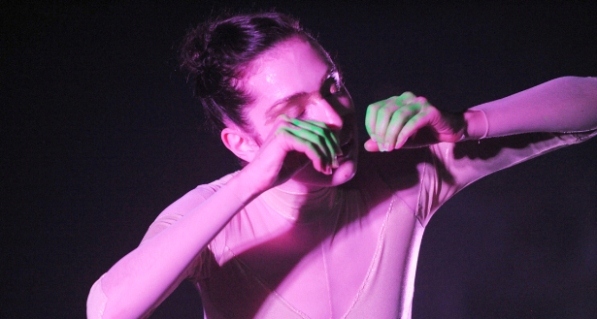
Pairing Tabula Rasa with Sharon Eyal and Gai Behar’s Lost Cause, creates a dynamic evening of contrasts. The dancer’s eloquent forms are encased in partially transparent body suits with strategically placed gleaming opaque sections of the palest hue, almost hinting at a fluorescent green under the lights. Creatures from a post-human reverie with machine like movements and green fingers, they walk on invisible high heels, heads bobbing bird-like, their gestures conveying a cryptic code. Stylized and primal, the dancers show their stuff in this cyborg groove.
Tabula Rasa by Ohad Naharin
Lighting Design: Ohad Naharin; Lighting Design Consultation: Avi Yona Bueno (Bambi); Music: Arvo Pärt; Costume Design: Mari Kajiwara.
Dancers: Noam Eidelman Shatil, Bret Easterling, William Barry, Zina Zinchenko, Eduard Turull, Keren Lurie-Pardes, Marija Slavec, Lotem Regev, Gil Shachar, Maayan Sheinfeld.
Lost Cause by Sharon Eyal and Gai Behar
Music: Ori Lichtik; Lighting Design: Avi Yona Bueno (Bambi); Costumes: Maayan Goldman, Sharon Eyal, Gai Behar.
Dancers: Noam Eidelman Shatil, Bret Easterling, Olivia Ancona, William Barry, Omri Drumlevich, Zina Zinchenko, Eduard Turull, Keren Lurie-Pardes, Marija Slavec, Lotem Regev, Nitzan Ressler, Gil Shachar, Maayan Sheinfeld, Or Schraiber, Maya Tamir.
Performances:
May 23, 2012 at 21:00 Suzanne Dellal
May 3, 2012 at 20:30 Jerusalem Theatre
May 17, 2012 at 21:00 Suzanne Dellal
May 18, 2012 at 22:00 Suzanne Dellal
May 19, 2012 at 21:00 Suzanne Dellal
May 31, 2012 at 21:00 Herzliya Performing Arts Center
Tickets may be ordered online, http://www.batsheva.co.il or call: 03-5171471.


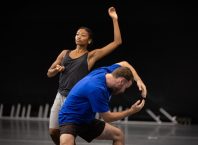
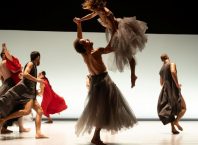
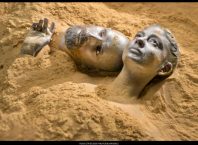
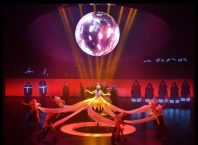
Comments are closed.